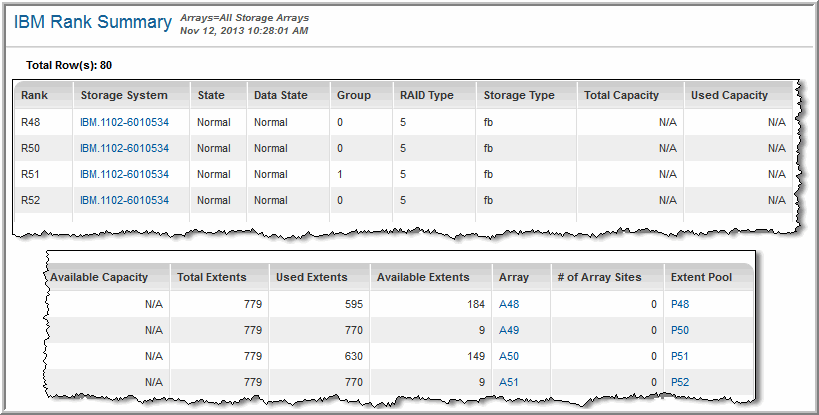

Rank | The name of the group of arrays |
Storage System | The physical storage system on which the rank resides |
State | The Configuration State: Normal, Configuring, Unassigned, Reserved, Deconfiguring, Depopulating, Configuration Error, Deconfiguration Error. A rank remains in an unassigned state until it is assigned to an Extent Pool. |
Data State | Normal - If no other data state issues, it is Normal. Note that an unassigned array will have a Normal data state. Degraded - A disk drive module in the array may be rebuilding. Read Only - Possible issues: one or more disk drive modules have failed; there aren’t enough spares available for rebuilding; data loss could occur if writes continue without redundancy. Failed - Possible causes: Two or more disk drive modules have failed; disk drive modules aren’t available for rebuilding data. Repairing - Array repair could be accepted, but not yet complete. Inaccessible - The storage image can’t access all the data on the array. |
Group | The Rank Group is either 0 or 1, corresponding to the Extent Pool ID. |
Raid Type | RAID 5, 6, or 10. |
Storage Type | Fixed block (FB) or Count-Key-Data (CKD). |
Total Capacity | The rank’s total capacity; the capacity is derived from the number of extents. |
Used Capacity | Amount of storage used by the rank. |
Available Capacity | Amount of the Rank storage that is available for use. |
Total Extents | The total number of Extents, striped across the disks in the array. |
Used Extents | The number of partitions/extents that are in use. |
Available Extents | The number of extents available for use. |
Array | The arrays that comprise the Rank. An Array (also known as a RAID Array) is an Array Site that has been formatted to a specific RAID format. |
# of Array Sites | 1 or more Array Sites comprise an Array, from which the Rank is configured |
Extent Pool Name | Links to the IBM Extent Pool Summary. |